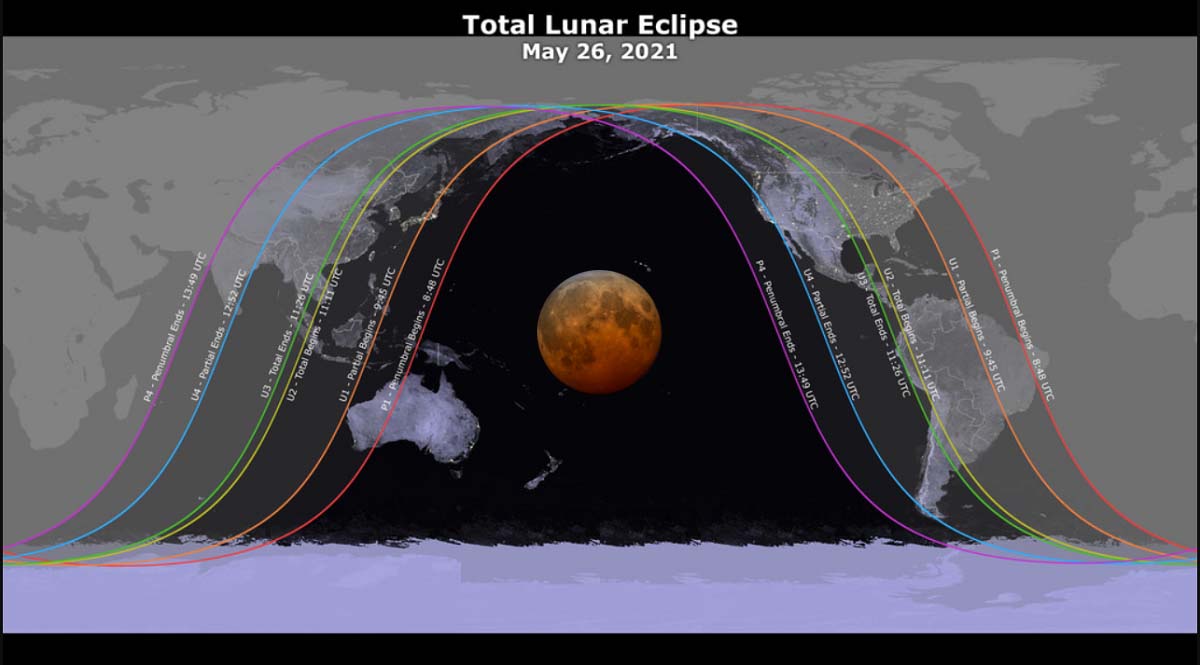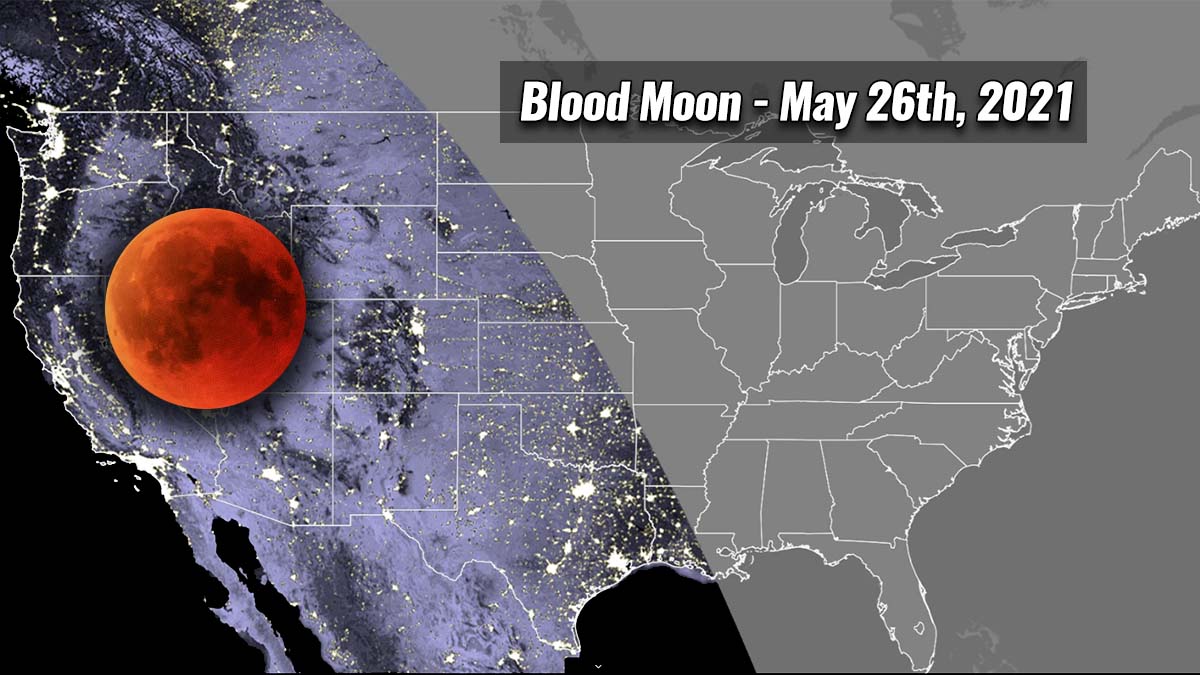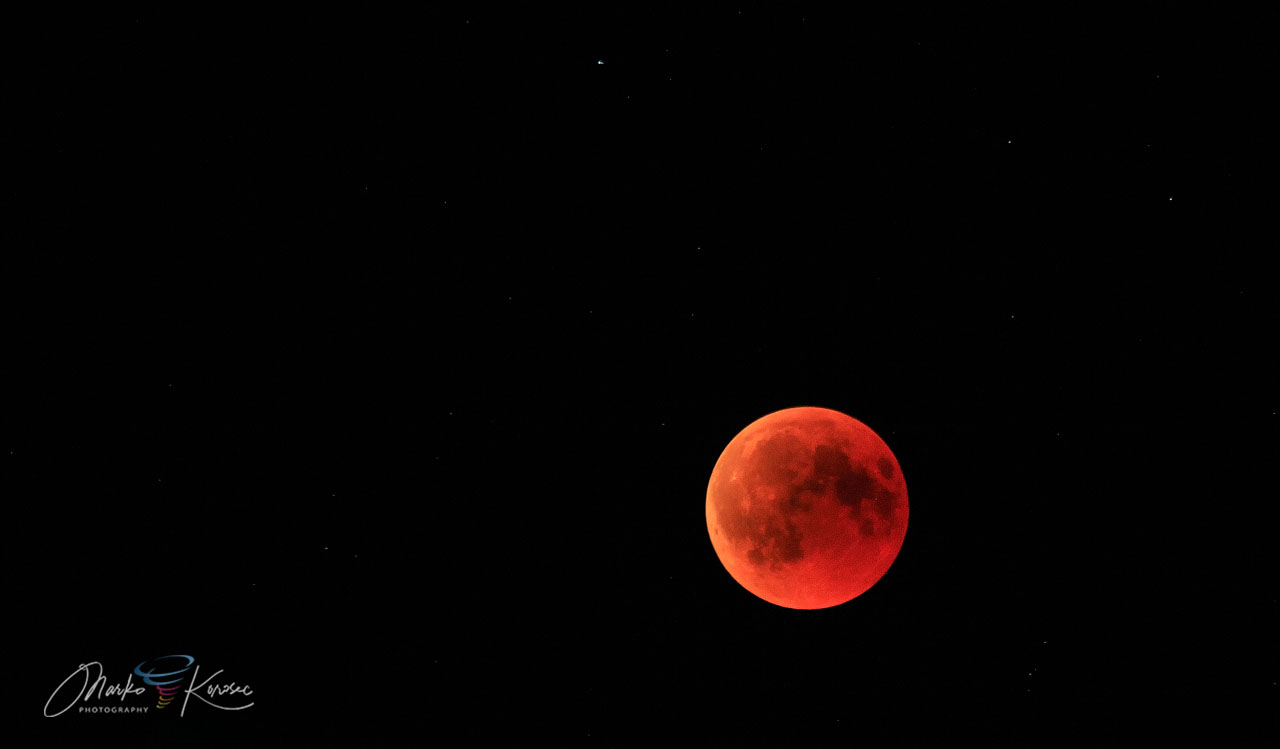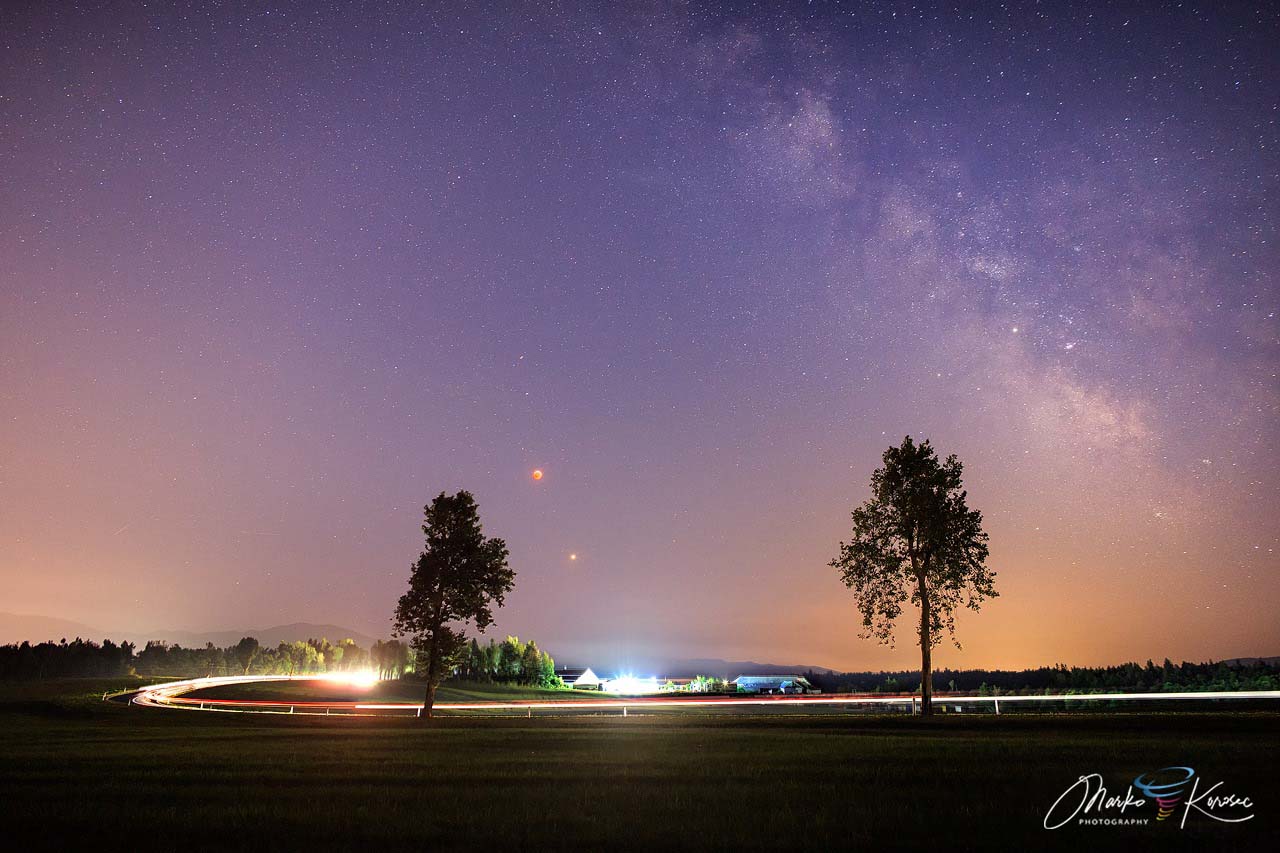The next Blood Moon will happen during the total lunar eclipse happening this week, Wednesday, May 26, 2021. It will be visible from parts of North America, Australia, the Pacific, and Asia. While the full moon passes through Earth’s shadow, many will be treated to a celestial show that will not appear again until May next year.
Lunar eclipses occur up to three times a year and can be seen with the naked eye. The total lunar eclipse this week is the first in nearly two and a half years. It occurs within hours of the closest perigee of the year, making the Moon appear about 7% larger than average.
The total phase this Wednesday will last about 15 minutes and is known as the supermoon. A supermoon means that the moon looks a bit bigger than usual since it’s a bit closer to the Earth than usual.
During the early morning on May 26th, observers across the western Americas will see the Moon entering the Earth’s shadow, creating a total lunar eclipse. The most interesting part begins when the Moon starts to disappear as it enters the umbra at about 2:45 a.m. Pacific Daylight Time (PDT). The Moon will stay in the total eclipse for about an hour and a half, being entirely within the umbra.

The best celestial show will happen over Hawaii, followed by California, the Pacific Northwest, New Zealand, and Australia as well. The Blood Moon will happen between 1:11 and 1:25 a.m. Hawaii time, and between 4:11 and 4:25 a.m. over California. Conditions seem quite good for observers across the western United States.
Most of Australia, as well as western Alaska, and New Zealand will experience the full eclipse. western Australia, Indonesia, Malaysia, China, Japan, and eastern Russia will see the total eclipse – Blood Moon – during the moonrise.
The Moon moves right to left, passing through the penumbra and umbra, leaving in its wake an eclipse diagram with the times at various stages of the eclipse. Below is the video animation of the eclipse this year:
The penumbra is the part of the Earth’s shadow where the Sun is only partially covered by the Earth. While the umbra is where the Sun is completely hidden. The Moon’s appearance isn’t affected much by the penumbra.
WHAT IS A BLOOD MOON AND WHY DOES IT TURN RED?
A Blood Moon normally happens when our moon is in the total lunar eclipse. Although astronomically speaking, this is nothing special, we can see the moon turning reddish while it is normally more of a whiteish color. Note, that Blood Moon is not a scientific term, but it is widely used nowadays as the moon turns into a reddish tone during the full eclipse.

While Earth orbits around the sun, the moon orbits around our planet. It takes about 27 days the moon orbits the Earth, undergoing its regular phases in a 29.5-day cycle. Lunar eclipses can only happen during a full moon when the sun fully illuminates the surface.
But normally, a full moon phase does not have an eclipse because the moon orbits in a slightly different plane than the Earth and the sun do. So it needs to be just the perfect angle that an eclipse (partial or full) occurs. When it happens, the Earth passes in between the moon and the sun and cuts off the sunlight, causing an eclipse.

The partial eclipse occurs when the Earth only partially blocks the sun, so the darkest part of its shadow falls across the moon’s surface. While it also happens that the moon passes through the lighter part of Earth’s shadow, causing a penumbral eclipse. During such an event, the moon darkens much less than during a typical lunar eclipse, so many might not even notice the difference.
However, the more spectacular events are the full eclipses. While our moon is in the Earth’s shadow, some sunlight reflecting from Earth’s surface, mostly from the sunrises and sunsets also reaches the surface of the moon. As the light waves are stretched out, they look reddish. When this red light strikes the moon’s surface, the moon also appears in red color.
Then, it depends on how much pollution is in the air, or how much cloud cover or debris is in the atmosphere at the time of the eclipse, which affects how red the moon will appear.

Above: A total lunar eclipse with planet Mars on July 27th, 2018. Photo by Marko Korosec
If you are unlucky with fair weather or time this week, there will be other opportunities over the next years as well. As Blood Moon happens quite often, the last one that happened was on Jan 20/21 two years ago. It coincided with a supermoon at that time.
Here are all the lunar eclipses over the next 10 years which will also happen to be Blood Moon events. But the list covers the whole world, so some travel will be needed if you would want to see them all.
- 2022: May 16th – visible from North America, South America, Europe, and Africa
- 2022: November 8th – visible from North America, South America, Asia, Australia, and the Pacific
- 2025: March 14th – visible from North America, South America, Europe, Africa, and the Pacific
- 2025: September 7th – visible from Europe, Africa, Asia, and Australia
- 2026: March 3rd – visible from North America, South America, Asia, Australia, and the Pacific
- 2028: December 31st – visible Europe, Africa, Asia, Australia, and the Pacific
- 2029: June 26th – visible from North America, South America, Europe, Africa, and the Middle East
- 2030: December 20th – visible from North America, South America, Europe, Africa, and Asia
One can notice on the list that the total lunar eclipse happening in 2028 will have the Blood Moon right on Christmas Eve. How cool is that, huh?

For some across Asia will even be around midnight. What a special event to start a New Year 2029 it will be! The above chart is provided by Timeanddate.
HOW TO PHOTOGRAPH MOON OR LUNAR ECLIPSE
Here are some tips on how to take some great pictures of the moon or the partial/total lunar eclipse. It is actually not that difficult to photograph as you will see below.
First of all, set your camera to a tripod. Use of a telephoto lens such as 200 to around 500 mm, even larger zoom is needed if you would want to have a nice zoomed image of the moon. The more zoom you have, the bigger picture of the moon you will achieve. You will need a shutter release as well.
Many photographers also want to frame the full moon or the total eclipse (blood moon) with some landscape in the foreground. It definitely gives some great enhancement to a landscape photo, so the use of a wide-angle lens, e.g. 15-30 mm focal length is a good choice too.

Above: Blood moon, Mars, and Milky Way near Postojna, Slovenia on July 27th, 2018. Photo by Marko Korosec
It is also important to make a proper focus on the moon. While autofocus could work, it is best to use a live view and do it manually while zooming in into th craters on the moon’s surface. Normally take a few test shots so you are sure your focus is good enough.
Set your camera to ISO 100 or ISO 200 and the aperture to between f/5.6 and f/11, and adjust your shutter speed to between 1/125sec and 1/250sec. This is usually a good start, then you adjust your settings if it is too bright or too dark. The exact settings will indeed vary depending on your camera and the brightness of the Moon.
Good luck with your observations, and feel free to report us!
SEE ALSO: